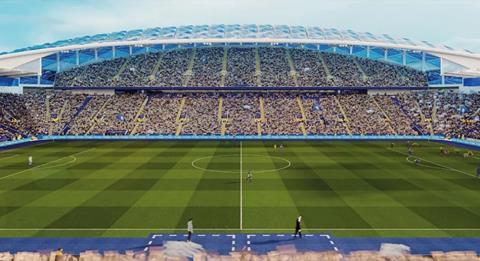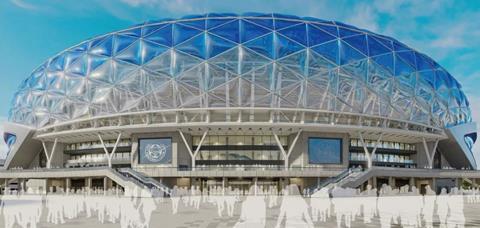
Leicester City FC’s plans to expand its football stadium have passed a key planning hurdle with the finalisation of a section 106 agreement with the local council.
The agreement has set out what the club needs to do before work on the KSS-designed scheme to add 8,000 more seats to the King Power stadium’s East stand can start. The work will take capacity up from the current 32,000 to 40,000 seats.
It comes after more than a year of talks between the club and the local authority over the scheme, which was approved in September last year.
The Foxes, who are currently top of the Championship after being relegated from the Premier League last season, now have a five year window to start work on the expansion.
But the club must carry out a series of site assessments before putting spades in the ground, including a survey of the site to check for any protected species and the creation of a mitigation plan if any are found.
A structural blast engineer will also need to carry out a blast mitigation impact assessment on the building’s proposed cladding before it is installed to inform material specification, and a copy of the analysis will need to be sent to counter terrorism officers.
Other requirements before work can start include the creation of an employment plan outlining measures to maximise local job opportunities, including collaboration with local job centres and council training initiatives.
Before any part of the development can be occupied, the club will need to submit a detailed travel and accessibility plans, and a strategy for locking down the entire stadium in the event of a terrorist attack.
Laing O’Rourke is understood to be lined up the main contractor job and is negotiating with the club over the price of the work.
>> See also: O’Rourke in the frame as Foxes’ stadium expansion set for kick off
O’Rourke, which is currently bundling Everton’s new ground, was one of seven firms which drew up a design and construction plan for the scheme’s planning application in 2021, alongside Curtins, ME Engineers, Gillespies and KSS.
Other working on the project team include Buro Happold, who is investigating part of the site for ground contamination.
The expansion of the East Stand is the detailed component of a wider hybrid application approved in 2022.

The outline element, which will need detailed approval before going ahead, includes a 20-storey residential building, a 220-room hotel, a 6,000-capacity arena for events, a multi-storey car park and a club retail store.
The club said yesterday that the outline element of the scheme was “critical to the viability” of the overall project and its approval would represent a key milestone for the wider project.
It also said it now has an opportunity to reassess the proposals in light of market dynamics which have “changed significantly” since the plans were initially submitted.
The club added that its acquisition of new land since the original planning application was first submitted “can now also be factored into our vision for the overall site, and presents a further opportunity to strengthen the club’s overall commercial proposition”.
The King Power Stadium, previously known as the Walkers Stadium, was completed by Birse, later bought by Balfour Beatty for £32m in 2002.
Birse was forced to write off £5.5m in bad debt after the club was put into administration in October 2002, with the cost of the ground and the club’s then relegation from the top flight being blamed.
The club’s current Thai owners have been in charge since August 2010.
